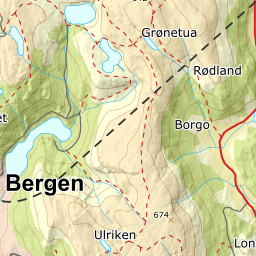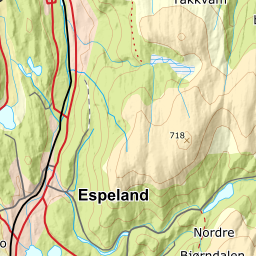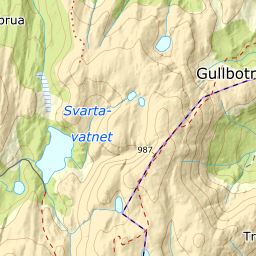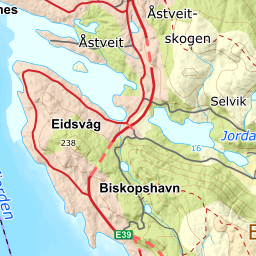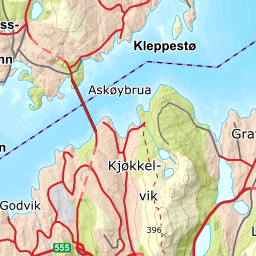Vidden is a concept for Bergen folk. People who live near Hardangervidda can sometimes smirk a bit at Bergen folks' pride over Vidden. But, ihere is in fact a geological connection between the two mountainareas. Before the Ice Ages began, these two mountain plateaus, and many other flat alpine areas in western Norway, hung together as one.
Through a long period in the Earth's Mesozoic Era, the land got eroded down to a weakly undulating, nearly flat landscape. When the land later rose, early in the Cenozoic Era, this gave the rivers an incline, speed and power. Later came the Ice Ages, and the glaciers began their carving work, even more effectively than the rivers'. The excavations divided up the even mountainous surface along fracture zones and softer rock types.
Ice erosion was least by the drainage divide since the ice movement was less here than further out toward the coast. The result was that the old landscape got largely preserved, such as we see it today on Hardangervidda.
In the Bergen area the changes were greater. The old mountain plateau landscape from the Mesozoic Era got strongly divided up and eroded, first by rivers and thereafter by glaciers during the ice ages. Between valleys and fjords, only a few small plateau areas were left standing, even though they in periods also were covered by ice. Vidden is one of these. The flatest areas on Vidden lie at about 620-660 metres elevation, from Turnerhytte and north to Borgaskaret. The top of Blåmanen and Rundemanen are also the remains of this mountain plateau landscape.


